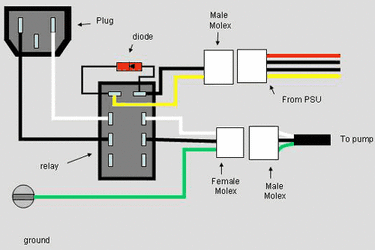- Joined
- Jun 10, 2002
- Location
- Los Angeles
I have read a ton of posts on the pump relay but I have a question that I couldn't get answered by reading previous posts.
Some people referred to a site with that had this pic (below) on it but I don't understand the whole "male molex" from the pump thing. Do you cut the pump's wire and fit some sort of adapter on there? or do you stick an adapter onto the end of the pump's plug? Anyone know? By the way, I was thinking of doing this with an eheim pump.

Some people referred to a site with that had this pic (below) on it but I don't understand the whole "male molex" from the pump thing. Do you cut the pump's wire and fit some sort of adapter on there? or do you stick an adapter onto the end of the pump's plug? Anyone know? By the way, I was thinking of doing this with an eheim pump.
